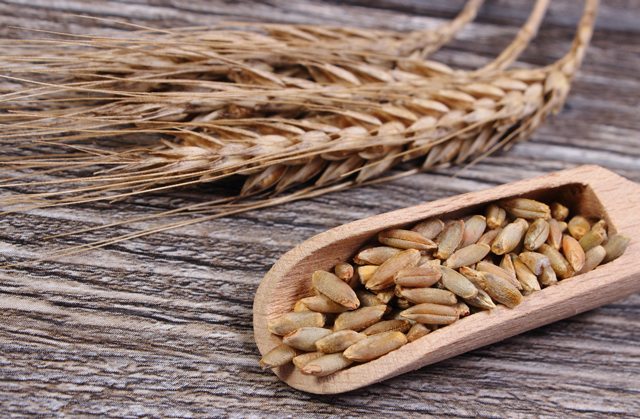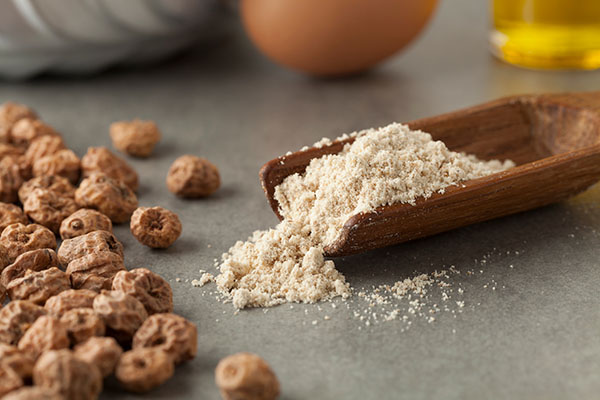
Advertisement
Once considered the poor man’s food, rye continues to remain in the shadows and isn’t as talked about as barley and wheat. However, this humble grain deserves a second look because it’s a nutrient-rich baking ingredient. Rye flour also offers several health benefits, such as improving your heart and digestive health!
There are three varieties of rye flour: Light, medium and dark. The difference in color is due to the amount of bran left in each kind post-processing. The darker the flour is, the more bran it contains. The bran layer of the flour contains most of rye’s nutrients. The more bran the flour has, the more nutritious it is.
Rye bread varieties to try
Rye bread is usually made with a combination of rye flour and rye grains (Secale cereale). There are several varieties of rye bread made with different and specific flour combinations:
- Light rye bread is made from only white rye flour derived from ground rye grain endosperm or the starchy core of the rye grain.
- Dark rye bread is made from ground whole rye grains. Dark rye flour can also be made from white rye flour colored with other ingredients like cocoa powder, instant coffee or molasses.
- Marbled rye bread is made from light and dark rye dough rolled together.
- Pumpernickel bread is made from coarsely ground whole rye grains.
In America, commercially made light and dark rye bread are usually made with wheat flour. Unlike regular white and whole wheat bread, rye bread is denser and darker. The latter also has a stronger and unique sour yet earthy taste.
Did you know that rye flour contains less gluten than wheat flour? This is why rye bread is denser and doesn’t rise as high as regular wheat-based bread. Keep in mind that rye bread still contains gluten. Avoid it if you have celiac disease or gluten sensitivity.

The health benefits of fiber-rich rye flour
Rye flour comes from the grain of the rye plant. While rye isn’t as popular in Western countries, it’s actually commonly used in Poland, Russia and other Scandinavian countries. Rye is slowly gaining more attention in other countries because of its amazing nutrient profile.
Rye flour is made by refining rye grains or grass. The flour contains various nutrients, such as:
- Calcium
- Carbohydrates
- Fatty acids
- Fiber
- Iron
- Magnesium
- Pantothenic acid
- Phosphorus
- Protein
- Sodium
- Zinc
Rye flour also contains gliadin, a compound that helps the bread to efficiently rise while baking. Rye flour is also a good source of energy.
The fiber-rich flour is also full of alkylresorcinols that may be good for liver cholesterol. Since rye flour is full of carbs, eating rye bread can make you feel full much faster than usual. This can help you eat less and promote weight loss.
It can boost your heart health
Eating rye bread regularly can help improve various aspects of heart health. Studies suggest that eating rye bread is also linked to lower levels of heart disease risk factors.
In an 8-week study involving 40 participants, researchers compared the effects of getting 20 percent of their daily calories from either rye or wheat bread on blood cholesterol levels. Results showed that rye bread was more effective at lowering cholesterol levels in men than wheat bread. The consumption of rye bread also helped reduce total and LDL (bad) cholesterol by up to 14 percent and 12 percent, respectively.
Researchers believe the effect was possible because of rye bread’s high soluble fiber content. This type of indigestible fiber forms a gel-like substance in your digestive tract that can help remove cholesterol-rich bile from your blood and body.
It promotes digestive health
Rye bread can help boost digestive health because it’s a fiber-rich superfood. Dietary fiber helps you maintain bowel regularity. Soluble fiber absorbs water, and this helps stools stay large and soft so they are easier to pass.
In a study, researchers found that 51 adult volunteers with constipation reported that rye bread was more effective than whole wheat bread and laxatives at treating constipation. As a bonus, rye bread didn’t have any negative side effects.
How to use rye flour
Rye flour has been labeled Generally Recognized as Safe (GRAS) by the Food and Drug Administration (FDA). The flour is often used as a flavoring agent in various recipes.
You can use rye flour to make the following:
- Bread – Rye flour produces softer bread that absorbs more water than wheat.
- Crepes – You can use rye flour to make flavorful crepes.
- Noodles – Rye flour can be used to make pasta or noodle dough that freezes well in the winter months.
- Pie crust – Use rye flour to make a pie crust that’s both flaky and savory.
Considerations when using rye flour
Always buy rye flour from a reliable source. If you buy ergot-infected rye, you may experience hallucinogenic effects similar to that of LSD.
Signs of ergot poisoning may include itching, muscle pain, nausea and numbness. If you experience some or all of these symptoms, consult your physician immediately. Ergot poisoning can be fatal if left unattended.

Rye flour recipes
Try the recipes below to make delicious bread and pastries using fiber-rich rye flour!
Rye banana bread
This recipe is a healthier version of regular banana bread. It uses only small amounts of natural sweeteners, so you don’t have to feel guilty while snacking on a slice!
Ingredients for 10 slices:
- 1 1/2 cup of rye flour
- 1/2 cup of coconut flour
- 5 tablespoons of coconut oil, melted
- 2-3 tablespoons of maple syrup or date syrup
- 2 teaspoons of apple cider vinegar
- 2 teaspoons of ground cinnamon
- 1 teaspoon of baking soda
- 1 teaspoon of vanilla extract
- 1/2 teaspoon of baking powder
- 1/2 teaspoon of sea salt
- 3 small bananas, roughly mashed
- Extra banana slices as garnish
- 3 eggs, beaten
- 5-6 medjool dates, finely chopped
Preparation:
- Preheat the oven to 350 F (180 C). Line a small to medium loaf pan with parchment paper.
- Prepare two large bowls, one for the dry ingredients and one for the wet ones. In the first bowl, stir the coconut and rye flours, dates, cinnamon, baking powder and salt together.
- Beat the eggs until foamy in the second bowl. Add the remaining wet ingredients and blend well.
- Combine the two mixtures by adding the wet ingredients to the dry mix. Beat with a balloon whisk.
- Transfer the dough into the lined loaf tin. Place the extra banana slices on top of the dough as a garnish.
- Bake in the oven for 50 minutes, then let cool on a wire rack. If the banana bread starts to brown too quickly, cover the top with tinfoil after 30 minutes.
Rye choco chip cookies
You can have your cookies and eat them, too, with this yummy recipe for rye choco chip cookies! The cookies have a crispy exterior with a chewy center. Using rye flour also gives them a nutty complexity that balances the sweetness of the chocolate.
Ingredients for 12 large cookies:
- 1 1/2 cups of dark rye flour
- 6 ounces of chopped chocolate (Or 1 cup of chocolate chips.)
- 1/2 cup of granulated sugar
- 1/2 cup of packed dark brown sugar
- 1/2 cup of packed light brown sugar
- 1/2 cup (1 stick or 4 ounces) of unsalted butter, at room temperature
- 1 large egg
- 1 teaspoon of baking powder
- 1 teaspoon of vanilla extract
- 1/2 teaspoon of kosher salt
- Flaky sea salt, for sprinkling
Preparation:
- Preheat the oven to 375 F. Line the baking sheets with parchment paper and set them aside.
- Mix the butter and sugars in a bowl. Stir in the egg and vanilla extract, then stir until smooth. Add the flour, baking powder and salt, mixing until thoroughly combined. Mix in the chopped chocolate.
- Portion the cookie dough into balls that are slightly larger than three tablespoons. Roll each dough ball with your hand, place it onto the prepared baking sheets at least 2 inches apart. Press the cookie dough balls gently into a puck.
- Sprinkle the cookies with a bit of sea salt.
- Bake until the cookies have spread and are browned on the bottom (at least 10 to 12 minutes).
- Let the cookies cool for several minutes on the baking sheet before transferring to a wire rack to cool completely.
Boost your heart and digestive health by baking tasty treats with nutrient-rich rye flour!
Sources:
Advertisements







